ISSN ONLINE(2319-8753)PRINT(2347-6710)
ISSN ONLINE(2319-8753)PRINT(2347-6710)
| Kapil Deo Prasad1,Sanjay Kumar Jha2,Ritesh Kumar Singh3 Assistant Professor, Dept. of Production Engg., BIT Mesra, Patna Campus, India1 Associate Professor, Dept. of Production Engg., BIT Mesra, Ranchi, India 2,3 |
| Related article at Pubmed, Scholar Google |
Visit for more related articles at International Journal of Innovative Research in Science, Engineering and Technology
Production process and technology practiced in utensils manufacturing units of Jharkhand is age old and there has been no initiative to analyze and incorporate modern technological development. The rudimentary production process is resulting in high percentage of defective utensils. These utensils manufacturer have to compete with the manufacturer in organized sector using modern manufacturing techniques. The quality / productivity achieved by bigger utensils manufacturer is quite high compared to the rural artisans. Therefore, there is a need to explore and identify appropriate technologies, adaptation of which could ensure improvement in level of quality/productivity achieved. The objective of this study is to know and identify areas with low productivity level in the utensils manufacturing units of Jharkhand.
Keywords |
| Productivity, quality, utensils manufacturing |
INTRODUCTION |
| Brassware manufacturing units have existed in India since ancient times, practiced mostly by tribal people. Brassware manufacturing is an integral part of rural industrial activity of the country. These unitsâÃâ¬ÃŸ production activities are labour oriented. They contribute significantly towards industrial employment and also as our link to ancient heritage and culture. They contribute about 15% of total output of small-scale industries, employing about 40% of the total workforce in this sector. These units are based on traditional skills and simple manufacturing processes that are carried mostly by hand tools and in few cases by simple machines. Lack of mechanization and technology adaptation are putting these utensils manufacturing units into disadvantageous position vis– a–vis industries in organized sector. This is threatening the very existence of these units.Being labour intensive, these utensils manufacturing units are employment generating, capital saving and capable of operating on a decentralized basis in rural areas. Increase of productivity is important in developing countries because of higher population growth, higher interest burden, international competition, scarcity of raw materials, balance of payment problem etc. Some of these problems can be overcome by paying greater attention to managing productivity. |
| The cluster development approach can play a vital role in the development of the micro, small and medium enterprises (MSMEs) in India. The cluster of the brass utensils manufacturing units at Jariagarh (Khunti), Jharkhand is one of the several clusters. |
II. A CASE STUDY |
| A case study has been undertaken to explore the productivity analysis. The brass & bronze utensils manufacturing clusters are located in the village Jariagarh (Khunti), Ranchi. The village Jariagarh (Khunti) is situated at Karra sub division of Ranchi Distt., Tehsil – Khunti (PIN – 835 234). It is about 50 K.M. away from Ranchi in the West-South direction. This the oldest and prestigious industry cluster in Jharkhand. The main product of this unit is brass and bronze utensils like, Thali, Lota, Bhagauna, Kathot, Kalchul, Karahi, Katora, Glass, Kathot, Tastari etc. |
| Present Technology and Process |
| The present technology of the manufacturing process of brass & bronze utensils is shown in Process Flowchart (Figure 1). The process of manufacturing utensils is completely done by manual technique and traditional practice. |
| The complete process for the range of product consists of mainly five stages: |
| a) Melting of scrap metal. |
| b) Casting of metal block. |
| c) Hammering of blocks in to circles. |
| d) Trimming and cup Drawing. |
| e) Scrapping and Design making. |
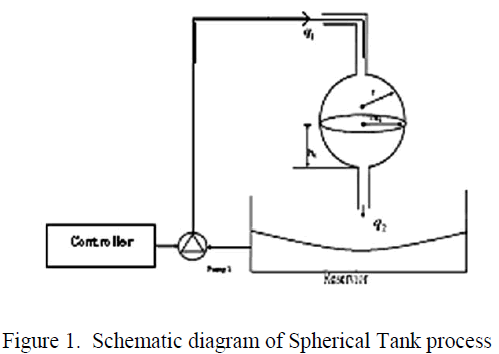 |
| a) Melting of Scrap Metal |
| Brass or bronze scrap is melted in the pit furnace called “Bhatta” (Figures 2 & 3) in colloquial language. Wooden coal is used in the pit furnace and hand driven blower is used for melting of scrap. The brass scrap is kept in a crucible of varying capacity as per requirement and heated in the furnace at about 800º C with the help of blower & wooden coke. There is no temperature control device for melting furnace and the temperature of furnace is maintained on experience by the worker who is melting. |
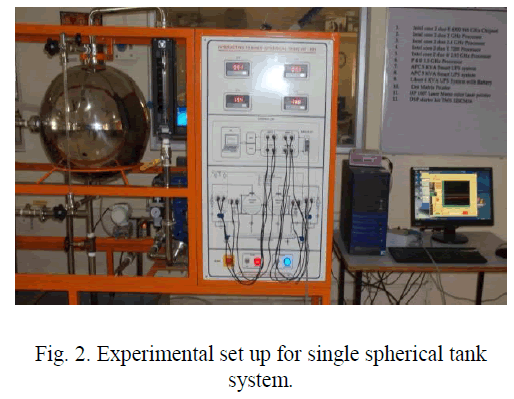 |
| b) Casting of Metal blocks |
| When the brass scrap is converted in to molten metal and pouring temperature is obtained then the molten metal is poured in to the mould called “saancha”(Figures 4 & 5) to produce blocks of different disc round shapes (from 500 gram to 5Kg). The mould “saancha” is made with ground fine dust (“mitti”) & paddy husk (“dhaan ka bhusa”) and baked like brick . It works as a good permanent mould made of ceramic materials. Quality & property of the ceramic material like refractoriness, permeability, hot strength, etc. are not considered while preparing the mould and that is totally dependent on the worker’s skill. Many times it happens that while pouring the molten metal , the mould is cracked which causes metal spillage and therefore there is a lot of wastage of metal and human effort. |
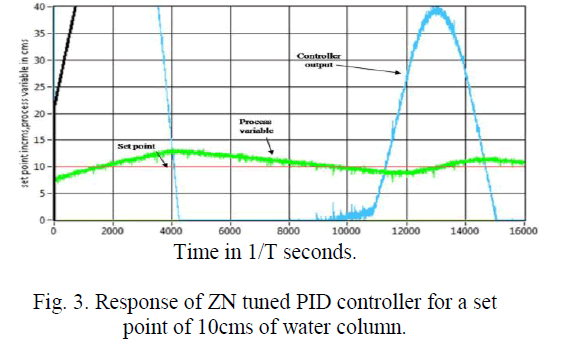 |
| c) Hammering of blocks into circles |
| Metal blocks are manually hammered by the simultaneous effort of four to five workers at a time on a single piece. One person holds the metal block with tongs(“Sandasi”)and rotates the block very slowly and uniformly and other four persons hammer the block one after another with iron hammer (“hathauda”) in a very rhythmic way to convert into circular shape. Between hammering the job is heated periodically in a separate furnace meant for heat treatment (Figures 6 & 7), to make the job soft and easily workable. The blocks are not quenched in water or oil for cooling but are directly kept on the anvil for manual hammering process. By adding one after another 4-5 metal blocks are hammered in group for circular plates at a time. This process continues until 4-5 circular plates of desired size (diameter from 10cm to 70cm) obtained. There is no facility to control & observe the furnace temperatures and to check thickness of the circular plate. This check is performed manually by experience. |
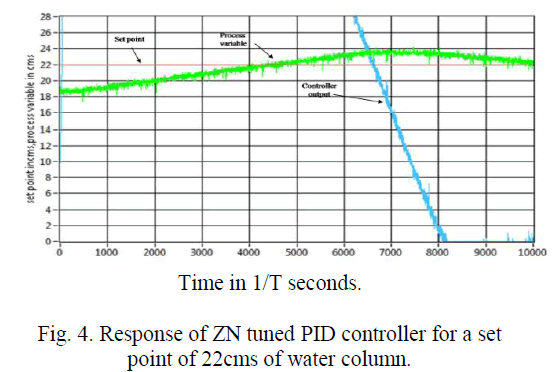 |
| d) Trimming and Cup Drawing |
| In case the circular sheet gets torn on the edges or contains uneven edges, then the edge is trimmed using chisel (“Chheni”) and small iron hammer (“Chhota hathaura”). The circular sheets are again heated in the furnace and hammered further for giving cup shape. One person holds the sheets with tools and rotates the sheets very slowly and uniformly and other four persons hammer to give the shape of “Thaali”. |
| e) Scrapping and Design making |
| After the product of required shape and size is obtained the inner surface is scrapped manually using a metal scrapper (“Nehdi”) to obtain a shiny finish (Figures 8 & 9). Also designs are made on the product by the Nehdi as per requirement of the customer. A big rectangular wooden block called “Papara kaath” is used for sharpening “nehdi”. |
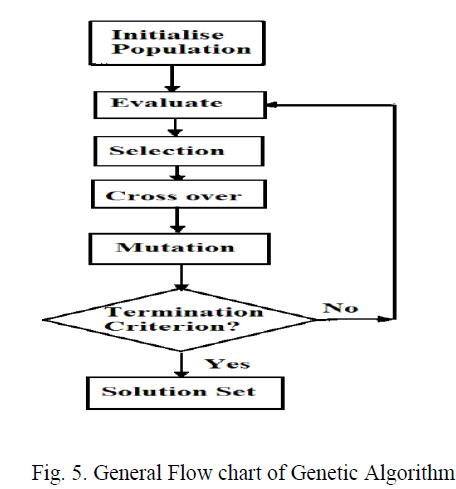 |
III. PRODUCTIVITY ANALYSIS |
| The existing level of productivity is measured using technique of productivity measurement, termed as Performance Objectives – Productivity (PO-P). Developed by Vrat, Prem et.al. [1] PO-P approach lays stress on the aspects of identification of areas with low productivity so as to bring about improvements. Its basic philosophy lies in the belief that input resources of an organization cannot be viewed in isolation. A methodology has been presented to help in identification of key performance areas, performance objectives and their weightage. |
| PO-P model |
| Under PO-P approach productivity index for the system is built up in stages from the productivity indices of the subsystems constituting the system. Productivity index of a sub -system is in turn built up from the productivity indices of the Key Performance Areas(KPAâÃâ¬ÃŸs) of that sub-system. A flow chart for the procedure for use of PO-P approach for productivity measurement has been given in fig. 10. |
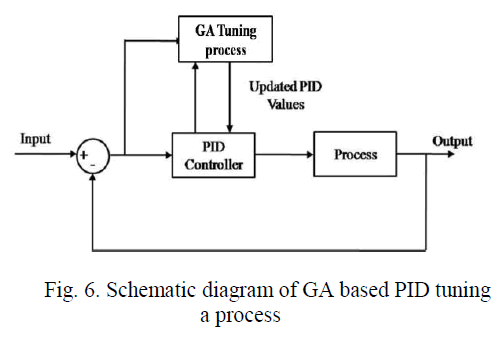 |
| A. Identification of Sub-systems |
| The concerned small scale brass utensil manufacturing industry can be considered to operate as a system with following sub-systems: |
| 1. Production sub-system (A) |
| 2. Technology sub-system (B) |
| 3. Material sub-system (C) |
| 4. Goals and values sub-system (D) |
| 5. Marketing sub-system (E) |
| 6. Ergonomics sub-system (F) |
| B. The following KPA’s fall under considered sub-systems |
| The KPA’s under each sub-systems have been listed in Table 1. |
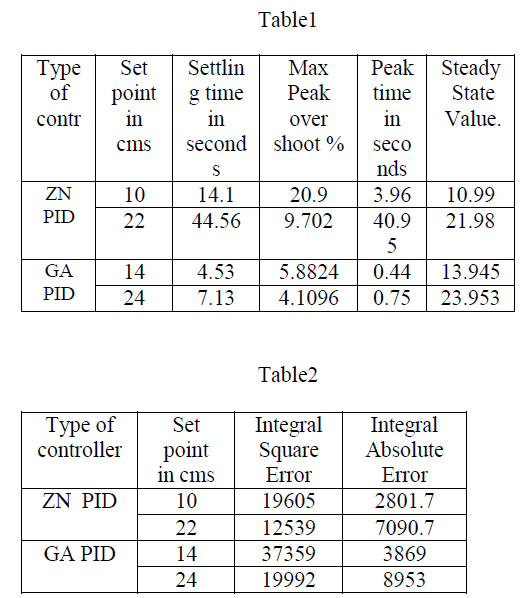 |
| C. Weightage of sub-systems |
| Method of Paired Comparison: In this methodology, each objective is compared to every other objective and weightage (Of relative importance) allocated on scale of 1- 3 as under (Table2). |
| 3- Allocated when there is a Major difference of relative importance |
| 2- Allocated when there is a Medium difference of relative importance |
| 1- Allocated when there is a Minor difference of relative importance |
 |
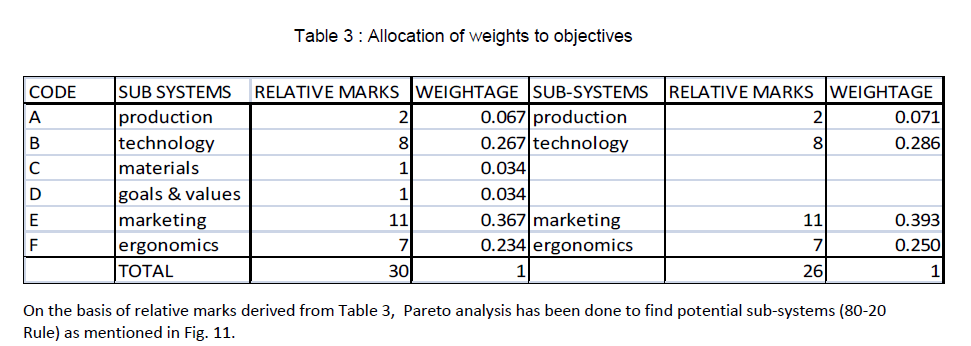 |
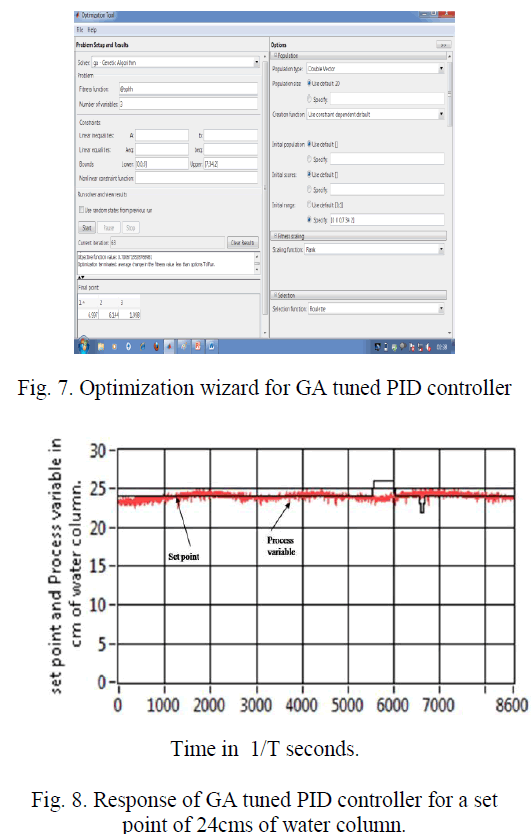 |
| D. Weightage of KPA’s (key performance areas) |
| Method of Direct Scaling: In this method the weighing is done directly. The evaluators are asked to decide upon the relative weight of each of the subordinate elements representing relative importance for the utility of the associated element on the next of hierarchy. The sum of the total weights of all elements is Identified as hundred (Table 4). |
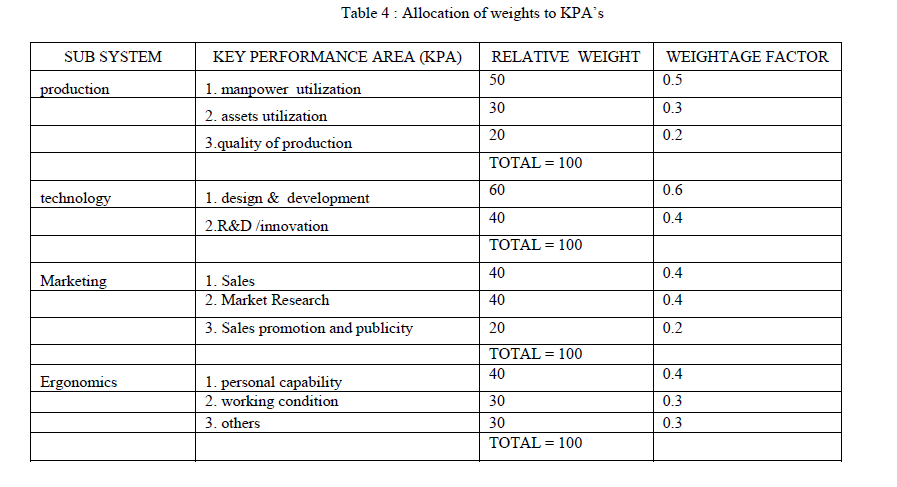 |
| E. Analysis of performance index |
| Now, the calculation of PI of KPAâÃâ¬ÃŸs & sub-systems has been done using Table 5, and finally PI of the system has been determined (Table 6). |
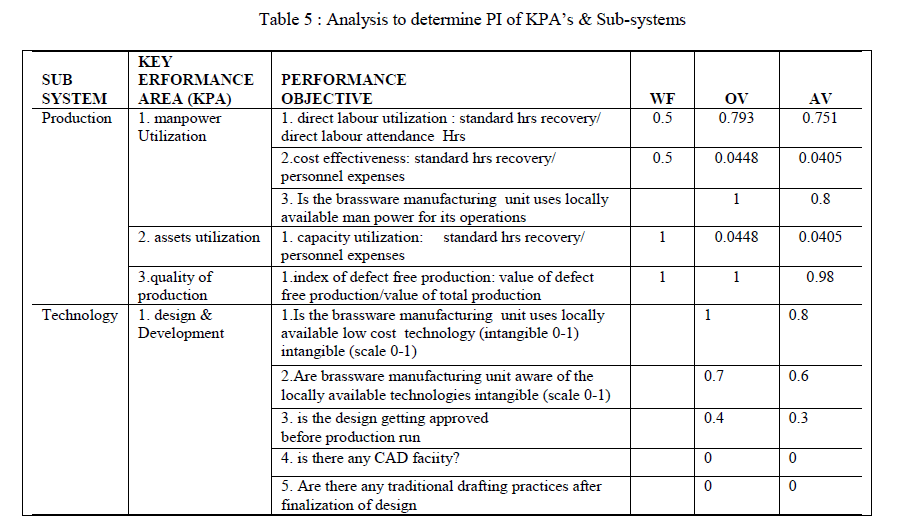 |
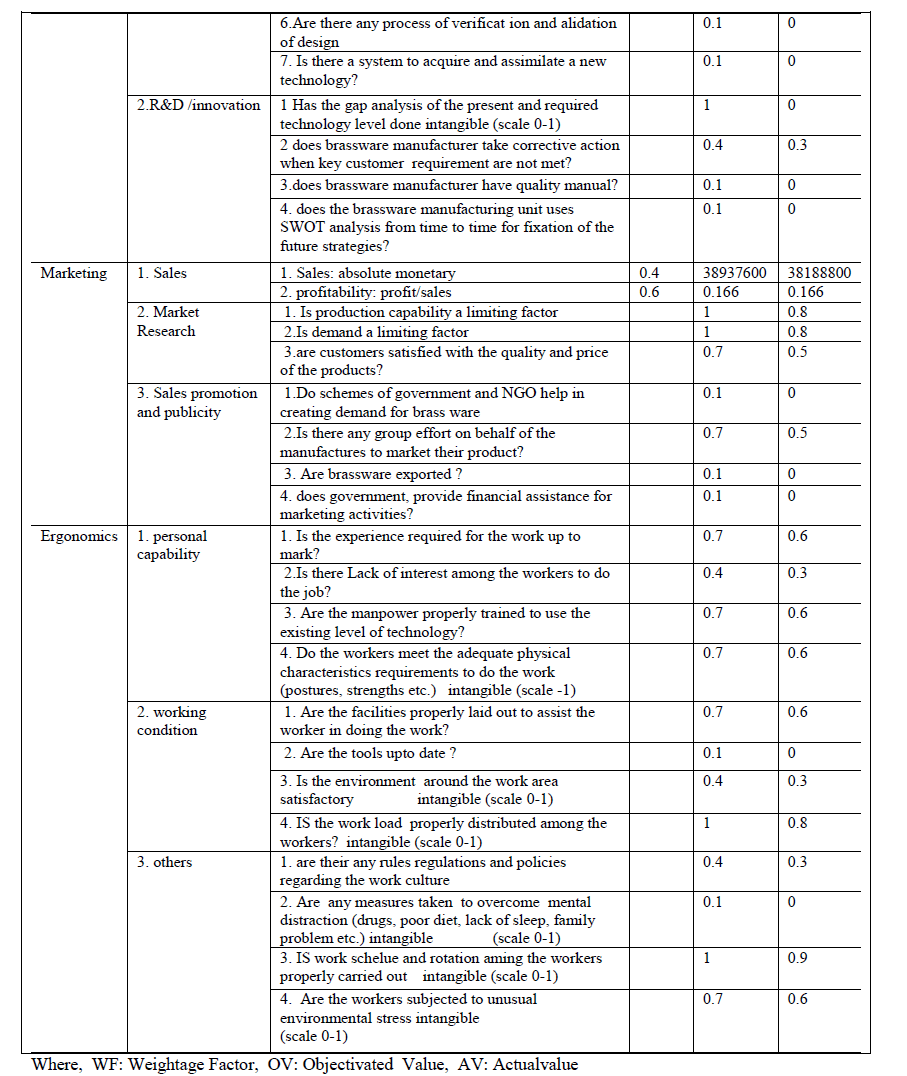 |
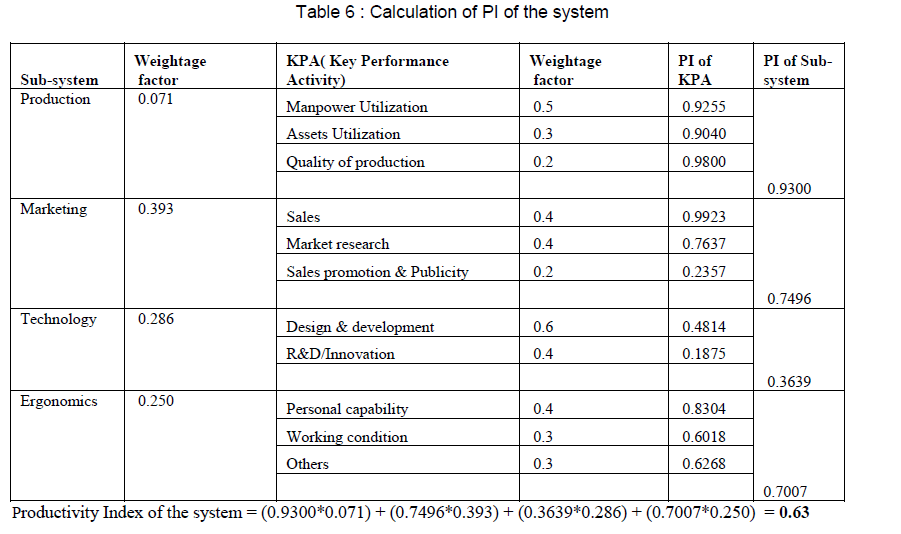 |
IV. CONCLUSION |
| The existing level of productivity is measured using technique of productivity measurement, termed as Performance Objectives – productivity (PO-P). PO-P approach lays stress on the aspects of identification of areas with low productivity so as to bring about improvements. Its basic philosophy lies in the belief that input resources of an organization cannot be viewed in isolation. A methodology has been presented to help in identification of key performance areas, performance objectives and their weightages. To include performance objectives of qualitative natureâÃâ¬ÃŸs questionnaire is used. For productivity measurement four sub – systems mainly „TechnologyâÃâ¬ÃŸ, „ProductionâÃâ¬ÃŸ, „Market „and „ErgonomicsâÃâ¬ÃŸ have been identified where improvement in productivity is needed by using latest findings in the area of multi-objective decision making in order to remove the subjectivity and biasness of the decision makers and to improve the productivity of the utensils manufacturing industries. |
References |
|